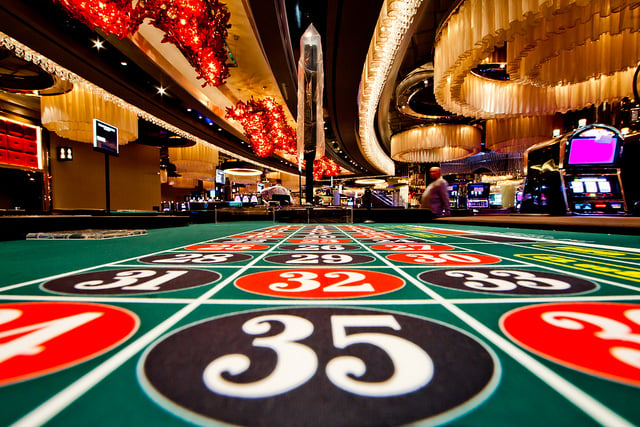
Gambling games have long captivated the human imagination, drawing players into a universe filled with luck, tactics, and the allure of thrill. Each activity is carefully crafted not just for entertainment, but also to evoke particular emotional responses that keep gamblers involved and invested. casino non AAMS sicuri Understanding the drives behind these designs reveals much about how psychology plays a key role in the gaming experience.
From the dazzling lights and lively sounds to the complex layering of rules and payoffs, casino games are designed to create an atmosphere of excitement and anticipation. Game designers leverage mental cues to influence gambler behavior, whether through the use of winning opportunities, almost wins, or social interactivity. By examining these elements, we can better appreciate how casino games fulfill not just a want for entertainment, but deeper psychological needs for adventure and uncertainty.
Comprehending Gamer Behavior
Casino games are designed with a thorough grasp of player psyche, which is crucial for drawing in and holding players. The thrill of the game, coupled with the hope of winning, creates a formidable allure. Game designers utilize elements like sonic elements, dynamic graphics, and immersive gameplay to seize attention and evoke emotional responses. These sensory effects enhance the immersive experience, making players feel more invested in the game.
Another important aspect of player behavior is the concept of risk and reward. Casino games often weigh risky situations with the potential for considerable rewards, which can lead to the phenomenon known as near-miss experience. When players come within reach to winning, the brain produces dopamine, strengthening their behavior and motivating them to continue playing in quest of that elusive win. This cycle of anticipation and frustration plays a key role in how games are structured and advertised.
Lastly, social factors also play a critical role in player behavior at casinos. Many games are made to be played in groups or with other players, creating a sense of togetherness and collective experience. The interaction inherent in games like poker enhances enjoyment and can culminate in longer play sessions. Designers leverage on this by designing environments that encourage players to stay, socialize, and revisit, making the overall casino experience more appealing.
The Role of Imagery and Sound
Visuals and sound play a significant role in enhancing the gambler’s experience within gambling games. Designers utilize bold colors, eye-catching graphics, and engaging animations to attract players’ attention and hold their focus. The use of motifs, such as adventure or opulence, helps create an immersive atmosphere that transports players into a different world. By appealing to the senses, these elements contribute to a heightened emotional response, prompting players to engage more deeply with the games.
Sound design is just as important in reinforcing the overall experience of gambling games. The combination of ambient music, sound effects for winning combinations, and ambient noises creates an auditory landscape that holds players fascinated. Sounds associated with victories, such as chiming bells or celebratory music, evoke feelings of excitement and satisfaction, prompting players to continue playing. These sound cues are carefully placed to enhance the thrill of the game and create a more immersive experience.
Additionally, the synchronization of visuals and sound is essential for reinforcing the game’s overall concept and atmosphere. Each element should coordinate harmoniously to create a cohesive experience that pulls players in. The effective use of this synergy not only enhances user satisfaction but also boosts the chances of repeat play, as players become more invested in the captivating world that the casino games offer. This thoughtful integration of visuals and audio ultimately enhances player involvement and loyalty.
Incentive Systems and Engagement
The development of gambling experiences heavily depends on incentive systems to keep players involved and returning for additional experiences. These structures are rooted in psychological principles that take advantage of human behavior and motivation. Participants are often driven by the thrill of success, which is supported by instant feedback through the game’s design. This prompt satisfaction not only improves the gaming experience but also cultivates a feeling of achievement, prompting participants to continue participating in hopes of greater gains.
Gaming establishments implement various incentive systems, such as jackpots, bonuses, and multipliers, to captivate participants. These elements create a layer of thrill that maintains engagement. Additionally, the randomness of results plays a crucial role in sustaining attention. The intermittent reinforcement schedule, where wins are unpredictable but happen often enough, maintains players on edge and driven to keep playing. This cycle of anticipation and anticipation is foundational to the success of casino games.
In addition, community aspects, such as competitive events and collaborative options, enhance the engagement factor by tapping into the desire to compete of participants. The shared experience of playing with fellow participants can intensify the thrill of winning and create a community atmosphere within the casino. By integrating these social dynamics with efficient incentive structures, gambling experiences not only provide entertainment but also foster a deeper bond among participants, solidifying their loyalty to the gaming experience.